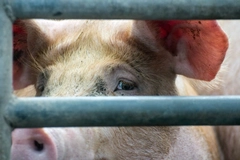
- Industry news
Industry news
- Category news
Category news
- Reports
- Key trends
- Multimedia
- Journal
- Events
- Suppliers
- Home
- Industry news
Industry news
- Category news
Category news
- Reports
- Key trends
- Multimedia
- Events
- Suppliers
Nestlé Boosts Chilean Dairy Sector with USD 100 million Investment

As the largest single investment in Chile’s dairy sector in the last 50 years, it reaffirms the Company’s drive to develop the industry through innovation, new technology and support for fresh milk suppliers.

30 Nov 2010 --- Nestlé will invest USD 100 million in the construction of a new powdered milk factory in Osorno, southern Chile.
As the largest single investment in Chile’s dairy sector in the last 50 years, it reaffirms the Company’s drive to develop the industry through innovation, new technology and support for fresh milk suppliers.
The new factory will have a maximum output capacity of 35,000 tons of powdered milk products, mostly for export to Central America but with the potential to expand to other markets.
Fernando del Solar, Chief Executive of Nestlé Chile, was joined by Juan Sebastián Montes, Regional Governor of Osorno; Jaime Bertín, Mayor of Osorno; Members of Parliament; and representatives from the local community, at the factory’s opening ceremony last week.
Mr del Solar said: "With this factory we continue to consolidate Chile's dairy development. Today, 40% of local dairy exports are made by Nestlé and we expect to double this figure in the next decade.”
The move strengthens the close relationship Nestlé Chile has fostered with its 1,200 fresh milk suppliers through the Dairy Support Programme. As part of the Company’s long-term approach to Creating Shared Value, the programme helps farmers to increase milk production while improving quality.
The factory will benefit from the improved supply of quality milk produced as a direct result of the programme, while the increased demand it generates will boost local suppliers’ income.
With production expected to start by the end of 2011, and exports beginning in early 2012, the factory will provide approximately 230 direct and 1,000 indirect employment opportunities when fully operational.
In supporting Nestlé’s environmental policy, the factory uses leading-edge technology to meet specific sustainability requirements.
It will aim to cut carbon emissions by generating energy through a biomass boiler, while the building’s design will maximise the use of natural light to reduce electricity
usage. A waste water treatment plant will allow water to be recycled for factory processes, reducing the amount drawn from wells.










